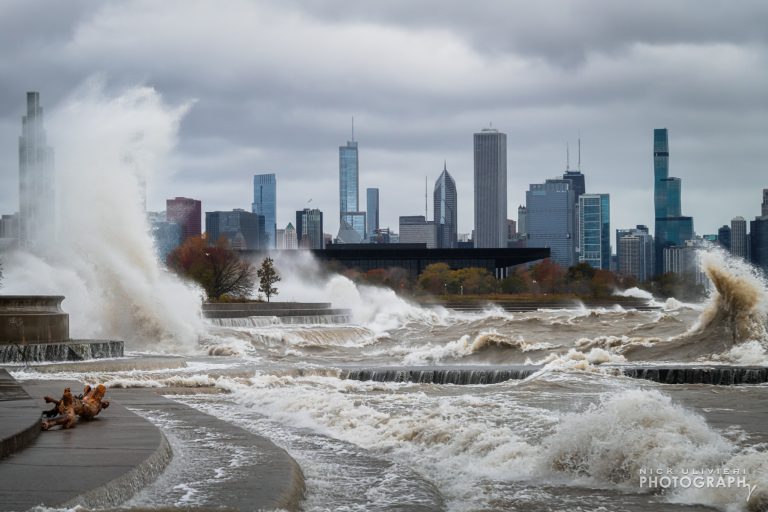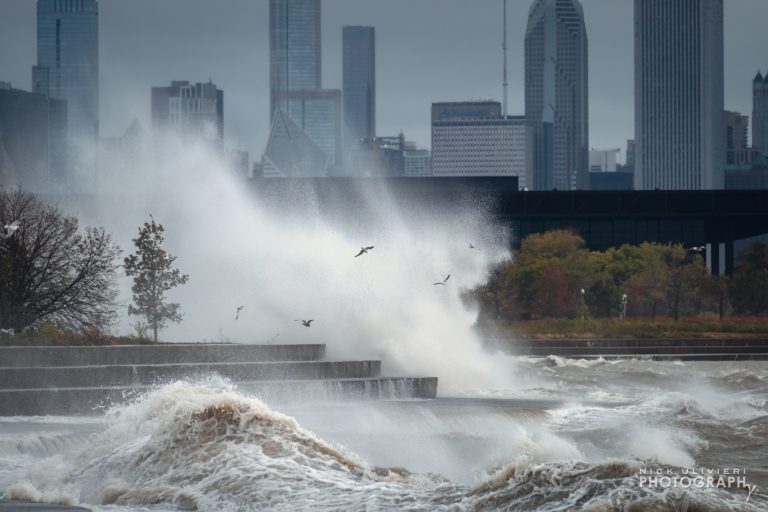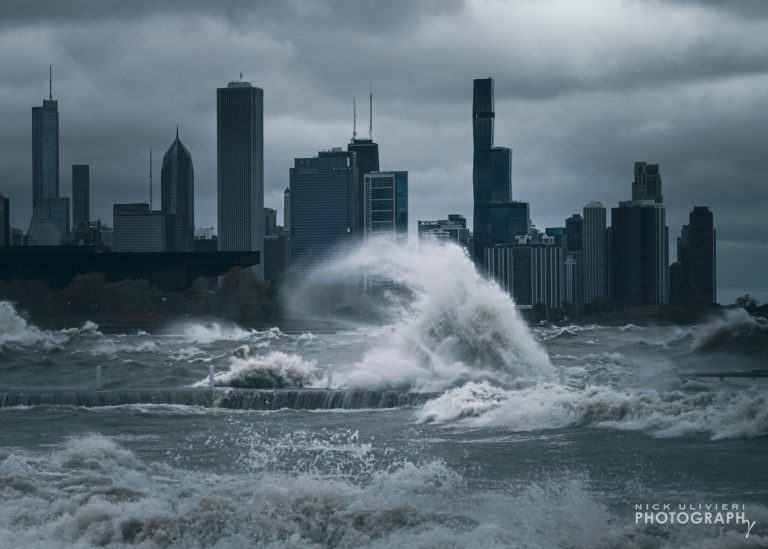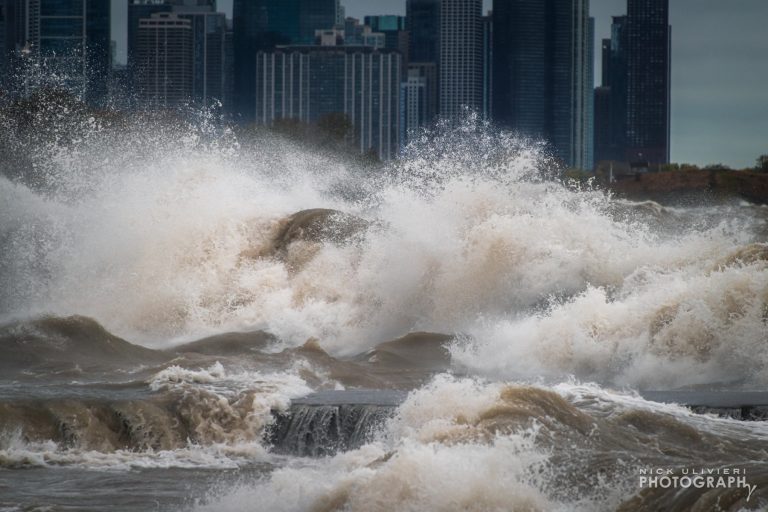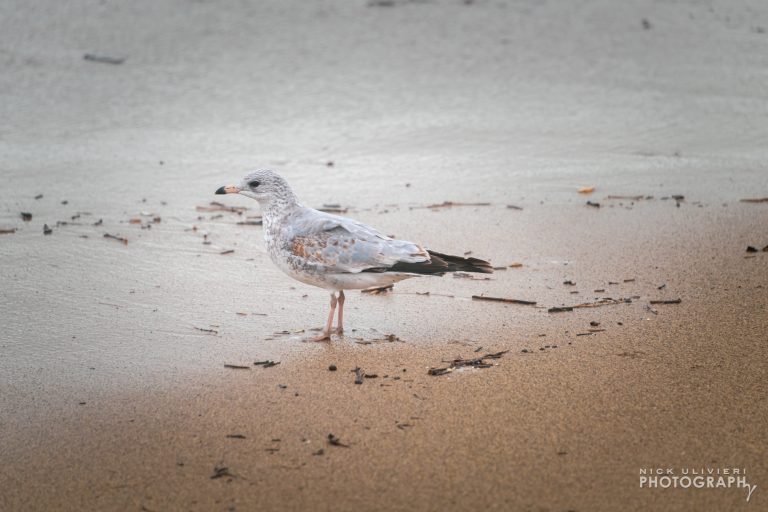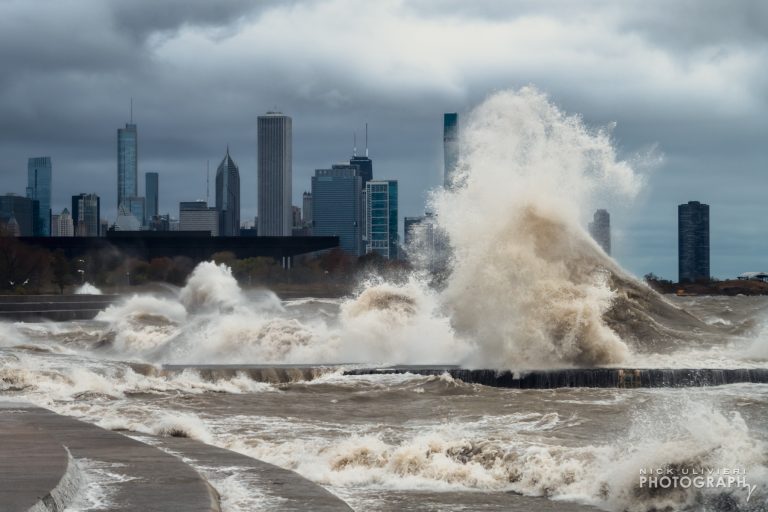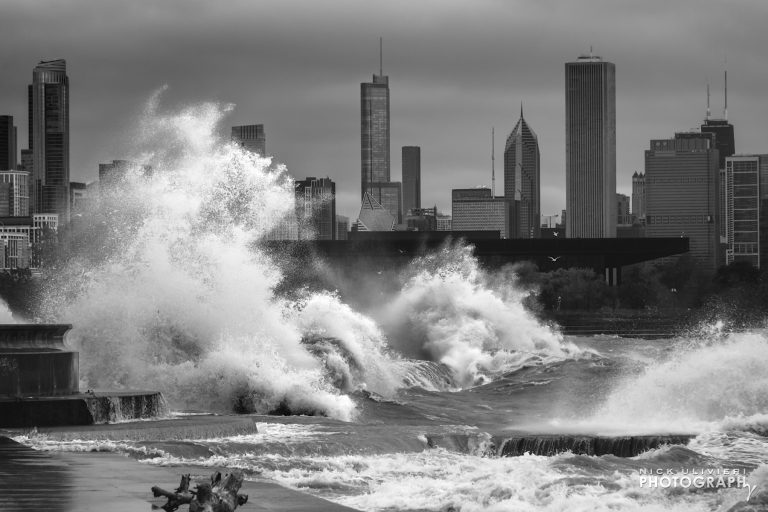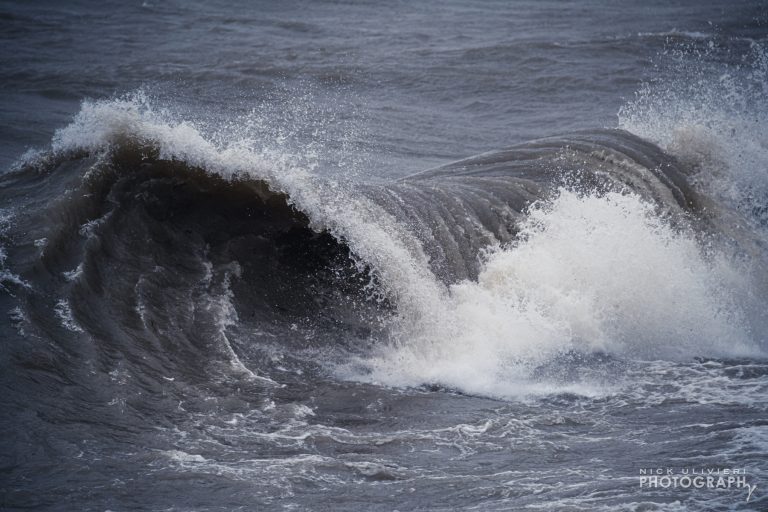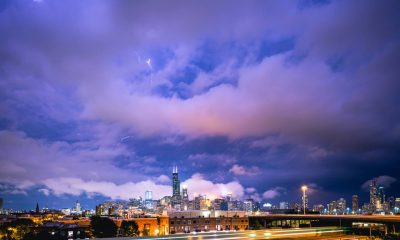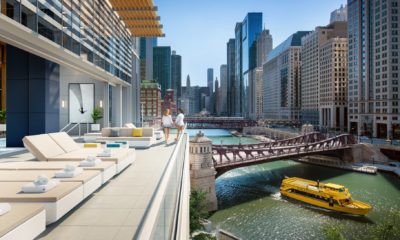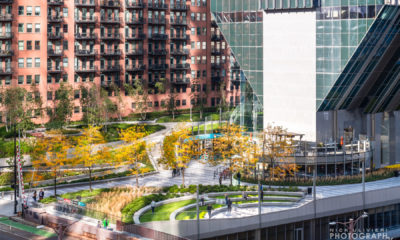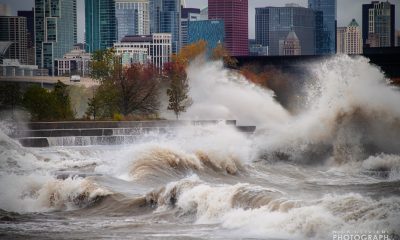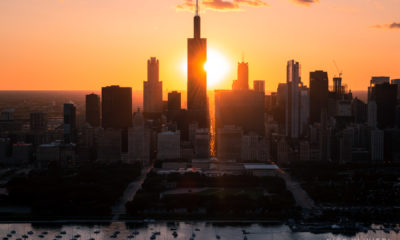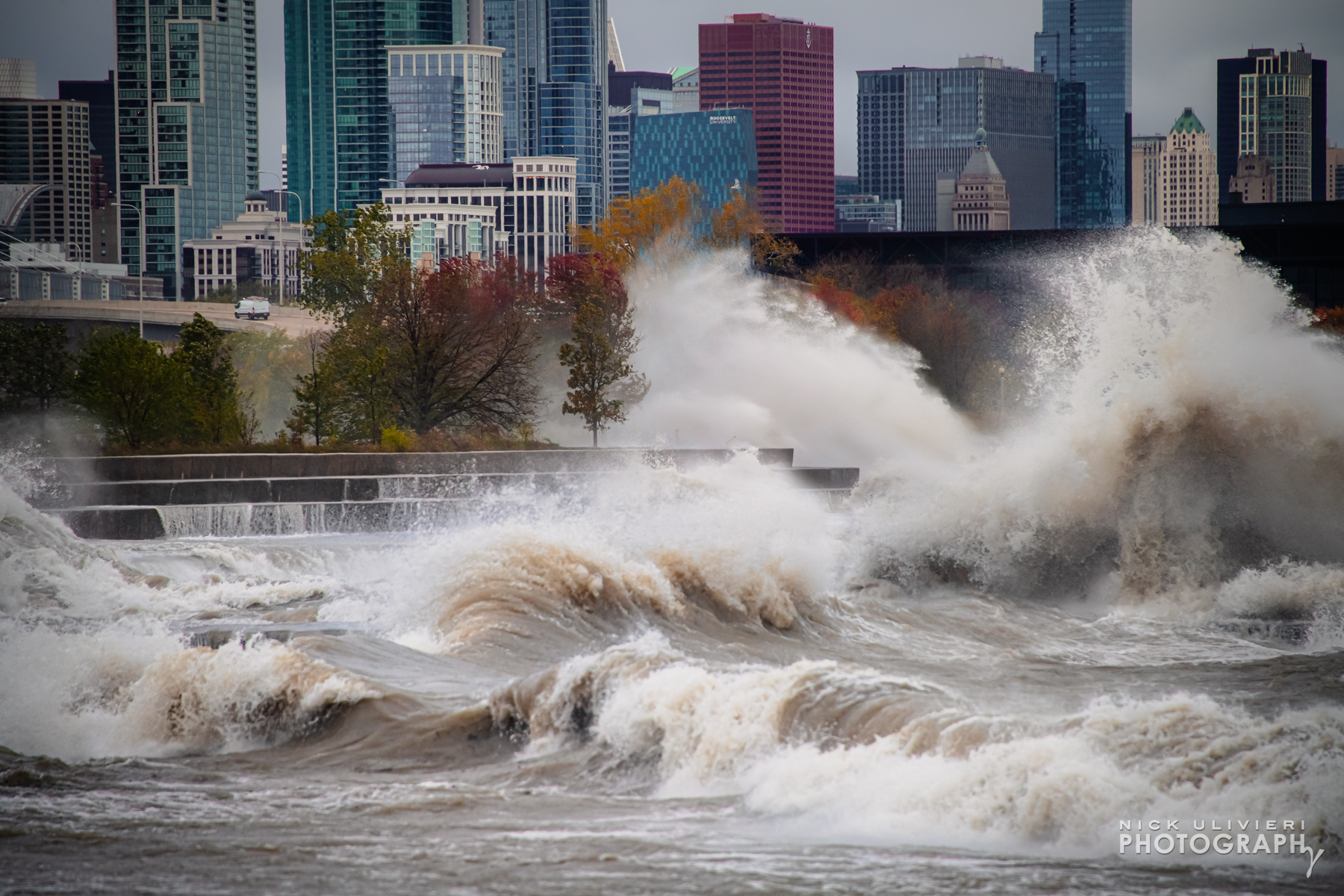
The lake was angry that day, my friends
Mother Nature and Lake Michigan put on an extraordinary performance Monday (10/25/2021). While high wind and waves were well forecasted, I didn’t expect the ferocity I found when I arrived at the beach. But Let’s back up for a sec and examine what causes ocean-like waves on a lake.
On any body of water, the maximum wave height is determined by fetch; the maximum distance wind can travel over open water. On oceans, where wind can blow thousands of miles unimpeded, waves 50-100 feet tall can build-up. On small lakes, this can’t happen. But the Great Lakes are special. While not as large as oceans or most seas, they are still massive bodies of freshwater.
Lake Michigan is a long and narrow lake. And in certain atmospheric set-ups (particularly in late fall) the wind’s direction can align with the long axis of Lake Michigan (307 miles). Sometimes called a ‘November Witch,’ a low-pressure system centered over the Great Lakes region sucks cool air from the North out of Canada. When this happens we get “full-fetch winds.” To put it more simply, when wind blows from the northeast to the southwest along the entire length of the lake, wave have a long time to build before they crash into the lake’s southern shore. To better illustrate, I made a crude drawing.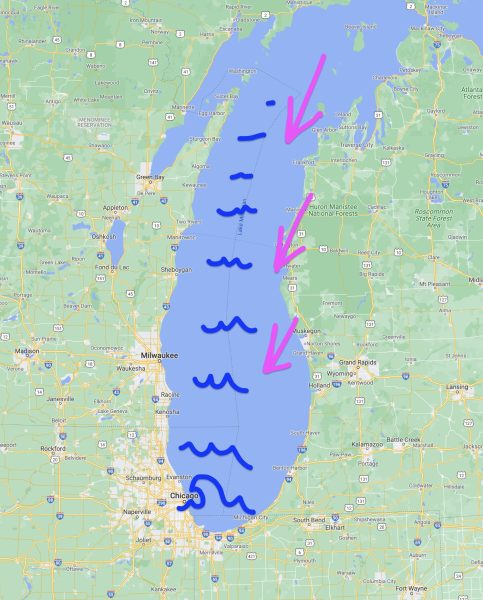
Well, on Monday, we had those full-fetch winds blowing towards Chicago in excess off 50 MPH! Those winds were expected to result in 10 to 14 foot waves. Now, those might not sound big, but those are on the open water a ways off the shoreline. When those waves move in and hit the concrete seawalls and breakwaters lining the lakefront, those heights multiply as they explode upwards.
As I read the weather reports and checked webcams I knew this should be a good photo op. Waves this epic only come around once every few years, and I didn’t want to miss them. Based on the wind’s direction and its ideal skyline backdrop, I chose 31st Street beach to enjoy the show.
The Beach
I layered-up, much as I do in winter, with warm-weather gear and a waterproof outer layer and made my way to 31st Street. As I approached the lakefront, even before I could see the lake, I saw white spray eclipsing the trees that line the lakefront trail. My adrenaline started pumping. Even when conditions are ideal as measured at official weather stations, small, hyper-local differences in wind speed, wind direction, and lake level will affect wave action. I’ve been to the lakefront on windier days where the waves weren’t as impressive. Today was perfect. I quickly parked and grabbed my gear from the trunk.
As I crossed the lakefront path on my way towards the beach, I could practically feel the waves thumping the concrete seawall 50 feet to my east. At the same time, the wind-driven mist from the previous wave pelted me. But then I got to the beach. While massive waves exploded off the stepped concrete seawall ringing the lakeshore, the beach itself was relatively calm. Despite a strong wind, once the waves barreled and broke along the beach, they non-threateningly pushed up the sand. Even then, I stayed away from the waterline – a telephoto lens helped bring the distant, violent wave action closer.
But those waves were unreal. I’ve seen similarly large waves before, but never so repeatedly. On this day, huge waves crashed against the seawall like clockwork. It was almost like shooting fish in a barrel. At times I let my camera hang from its strap, leaned into the wind, and just enjoyed the show. Thankfully it wasn’t too bitter a day. It would have been much less enjoyable if the temperature was 10° colder or so. I even lucked out and managed to catch a nice mix of fall color on the distant trees. The last time I photographed similar waves, the trees were bare.
In the hour I was out there I took nearly 1,600 frames. Way too many, to be sure, but when it comes to waves, by the time you see a good composition in your viewfinder, it’s too late to compose the shot. So, I sprayed and prayed. I solely used the Nikkor 28-300 lens which I’ve come to love for its versatile zoom range. Though it has a variable aperture and isn’t as ‘fast,’ as high-end glass, the image quality is surprising.
But in these conditions, it’s hard to expect perfection from any lens. There are a lot of external forces working against you; spray on the front element softened some images; the frenetic nature of tracking and shooting liquid objects leads to some misplacements of focus – and all the while – the wind is doing it’s best to blow your lens off target. But that’s the nature of shooting in these conditions. There are certainly some technical issues with the images, but documenting split-second moments of Mother Nature’s power – that can never be recreated – transcends the technical miscues in some of the frames.
All that said, here are a few of my favorites images:
And here’s a quick video:
Conditions at 31st Street beach are insane 🌬🌊 #ILwx pic.twitter.com/te5wZtj39q
— Nick Ulivieri (@ChiPhotoGuy) October 25, 2021

